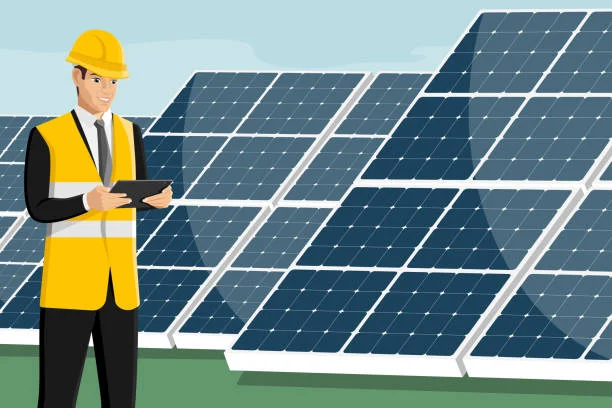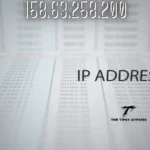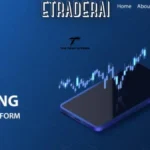Solar energy has become an increasingly popular choice for homeowners and businesses seeking sustainable and cost-effective power solutions. While installation is a critical step in harnessing solar power, the work does not end there. Maintaining the efficiency and reliability of a solar energy system requires ongoing attention, monitoring, and preventive care. Proper maintenance ensures that the system continues to produce optimal energy, prevents potential damage, and extends the lifespan of the panels and associated equipment. Solar providers implement systematic approaches to monitor and service systems, ensuring that clients receive consistent benefits from their investment. We will explore how these companies manage systems after installation, highlighting the processes, tools, and strategies involved in maintaining peak performance.
Curious for more? This related post expands the conversation.
Monitoring and Maintaining Solar Systems
Remote System Monitoring
Many solar providers, including North Valley Solar Power, utilize remote monitoring systems that track the performance of solar panels in real-time. These monitoring platforms provide detailed insights into energy production, consumption patterns, and potential anomalies. Homeowners and businesses can often access dashboards through online portals or mobile applications, enabling them to see how much energy is being generated versus what is being consumed. Providers use this data to quickly identify issues, such as drops in energy output or inverter malfunctions. Early detection allows technicians to intervene before minor issues escalate into major repairs. Additionally, remote monitoring helps optimize system performance by adjusting settings or providing recommendations for energy usage that can maximize efficiency.
Regular Inspections
Routine physical inspections are a crucial component of post-installation maintenance. Technicians schedule visits to check panels, wiring, inverters, and mounting hardware for signs of wear or damage. Environmental factors, such as dust, bird droppings, or foliage, can reduce panel efficiency. Inspections ensure that these obstacles are removed promptly. Inspections also include verifying the integrity of electrical connections and ensuring that the system complies with safety standards. By conducting scheduled assessments, solar providers can detect issues that remote monitoring might not fully capture, such as physical damage from storms or animal interference. This proactive approach reduces the likelihood of costly repairs and downtime.
Cleaning and Upkeep
Solar panels require occasional cleaning to maintain optimal performance. Dirt, debris, and grime can accumulate on the surface, reducing the panels’ ability to absorb sunlight effectively. Depending on the location, cleaning schedules may vary from several times a year to more frequent intervals in environments with high dust or pollen levels. Solar providers often offer professional cleaning services or guidance for safe DIY maintenance. In addition to panel surfaces, the overall system is inspected for corrosion, moisture ingress, or other environmental damage that could impact its functionality. Regular upkeep ensures that energy production remains consistent and that the system continues to meet projected savings and efficiency goals.
Inverter and Battery Maintenance
Inverters and energy storage systems, such as batteries, are integral to the functionality of solar setups. Inverters convert the direct current (DC) produced by solar panels into alternating current (AC), which is used in homes and businesses, while batteries store excess energy for later use. Providers closely monitor inverter performance, checking for error codes, voltage irregularities, and software updates that may be required. Batteries also undergo testing to verify capacity retention, charge-discharge cycles, and temperature regulation. Proper maintenance of these components is essential, as inverter or battery failures can significantly impact the overall system performance and energy availability.
Software Updates and System Optimization
Technological advancements in solar systems often require software updates to optimize efficiency. Providers ensure that firmware for inverters, monitoring equipment, and smart energy management systems is up to date. Updates may improve energy tracking, enhance reporting features, or introduce new functionalities that help clients maximize their solar investment. Additionally, data from monitoring systems can inform recommendations for adjustments in energy usage or the addition of new components, such as energy-efficient appliances or extra panels, to meet evolving demands. Continuous optimization allows solar systems to adapt to evolving energy needs while maintaining reliable performance.
Warranty and Support Services
Many solar providers offer ongoing support and warranty services after the installation is complete. These services cover system repairs, replacement of defective components, and technical guidance. Warranties may include specific coverage for panels, inverters, and batteries, offering clients reassurance that their investment is protected. Support services often involve dedicated customer service teams that can respond to performance concerns, schedule maintenance visits, and provide troubleshooting assistance. By integrating warranty and support into post-installation care, providers ensure that clients experience minimal disruption and enjoy consistent energy savings.
Performance Reporting
Transparency and accountability are important aspects of solar system management. Providers generate regular performance reports that detail energy production, efficiency trends, and any corrective measures taken. These reports help clients understand the value generated by their system, track cost savings, and make informed decisions about future energy consumption. For commercial installations, performance reporting is often tied to financial planning, sustainability metrics, and regulatory compliance, making it a vital component of ongoing maintenance.
The work of a solar provider extends far beyond the initial installation of panels and inverters. Through remote monitoring, routine inspections, cleaning, component maintenance, software updates, warranty support, performance reporting, and emergency response, providers ensure that solar systems remain efficient, safe, and reliable over time. These efforts help homeowners and businesses achieve consistent energy production, cost savings, and environmental benefits. By prioritizing ongoing system management, solar providers play a crucial role in sustaining the long-term value of solar energy investments. The comprehensive approach to monitoring and maintenance reinforces the importance of professional oversight, ensuring that solar technology continues to serve its intended purpose while adapting to evolving energy needs.
Top feature alert—this post deserves your attention.






